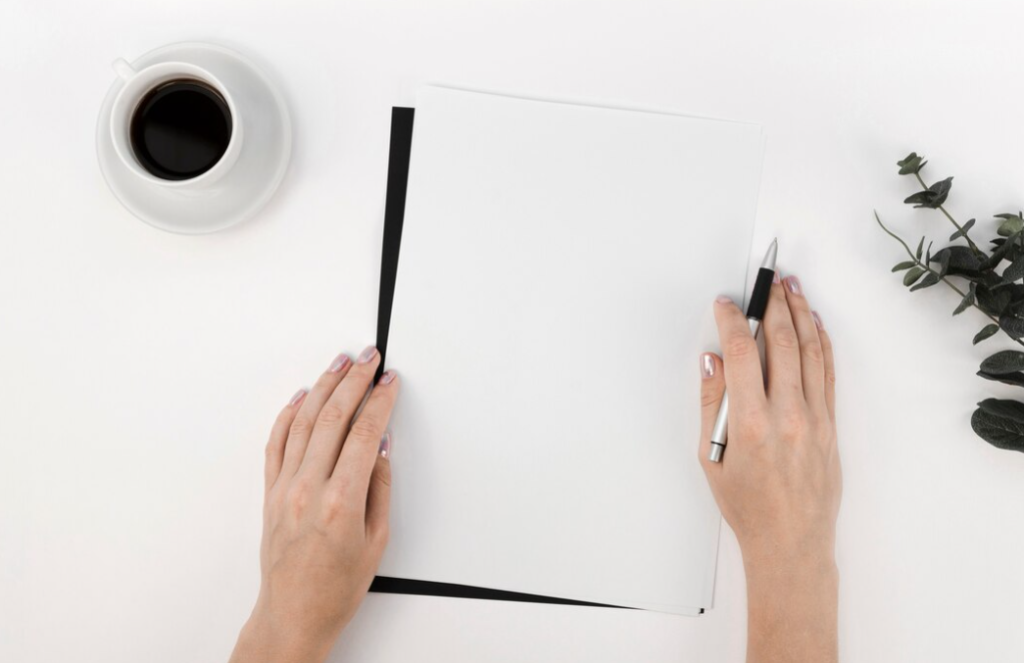In today’s digital age, handwriting still plays a significant role in our daily lives. Whether you’re jotting down a grocery list, taking notes during a meeting, or capturing your next big idea on a napkin, handwriting remains relevant. If your handwriting is illegible to you or others, it can be an inconvenience at best and a hindrance at worst. Improving your handwriting isn’t just about neatness; it’s about becoming a more effective communicator.
Moreover, there’s a cognitive benefit to handwritten notes that surpasses typing when it comes to memory and learning. So, enhancing your handwriting skills not only helps you convey your thoughts clearly but also boosts your cognitive processes. Here are some straightforward tips and techniques to help you on your journey to better penmanship.
The Benefits of Improving Your Handwriting
We are all well aware that effective communication is a fundamental element of achieving success in various aspects of life, whether it’s in business, marriage, or simply navigating the complexities of existence. When individuals struggle to communicate effectively, it can pose significant challenges in their interactions with the world.
At Ink Factory, we harness the power of visuals as a potent and captivating means of communication. However, it’s worth noting that letters themselves also fall under the category of visuals.
If you fail to produce legible letters, you might be missing a valuable opportunity! Having legible (dare we say, tidy) handwriting can significantly enhance your ability to communicate with colleagues – and even with your future self. (Ever found yourself puzzled by something you hastily jotted down in your calendar two weeks ago?)
Furthermore, for those seeking an additional incentive to put down the laptop and embrace handwritten communication, studies have shown that it can boost creativity and facilitate the learning process.
The written language, as we know it today, has its origins in pictography and logograms. Ancient civilizations employed abstract visual symbols to convey ideas when engaging in trade, and over time, these symbols transformed into representations of sounds, ultimately forming the words we use today.
So, the next time you contemplate composing a letter, why not consider expressing it through drawings instead?
Top Methods for Enhancing Your Handwriting
When we instruct our budding artists, we encourage them to think of “drawing” letters rather than merely writing them. This approach helps them become more mindful of the correct angles and shapes of each individual letter. However, achieving neat handwriting is a more intricate endeavor than one might initially assume. Here at Ink Factory, we have a few additional guidelines that can be immensely helpful in attaining clean and legible handwriting.

Absolutely No Ballpoint Pens Allowed!
At Ink Factory, we have a strict policy against ballpoint pens. Wondering why? Well, it’s because they produce exceedingly thin and faint lines, necessitating more pressure on the page compared to markers. When you’re engaged in extended, rapid writing sessions, you need a pen that offers minimal friction. This entails opting for a pen with a softer tip and a generous ink flow. For tasks requiring precision at a smaller scale, we highly recommend the Paper Mate Flair pen. Flair pens allow you to vary line thickness based on the pressure applied, resulting in distinct and bold black lines.
Adapt Your Writing Tools to Your Canvas Size
When it comes to creating legible and visually appealing content, it’s essential to match the size of your writing or drawing tools with the dimensions of your canvas or writing surface. Imagine using a standard office pen on a large flip chart – the result would likely be illegible to your audience. To ensure clarity and readability, it’s crucial to select a tool with an appropriate thickness that is visible and suitable for the surface you are working on.
Enhance Your Handwriting with All-Caps Writing
If you take a glance at our graphic recordings, you’ll observe that we frequently employ all-capital lettering. Why, you might wonder? It’s because capital letters offer a consistent height, resulting in a cleaner and more legible appearance. But the advantages of all-caps handwriting extend far beyond graphic recordings. Embracing this style can significantly improve the legibility and neatness of your handwriting in various contexts.
Paying Mind to Spacing
Maintaining proper spacing is a fundamental aspect of ensuring the legibility and readability of your text. Adequate spacing between individual letters, words, and lines prevents characters from blending together and enhances overall clarity. Cultivating a deliberate and steady writing pace can assist in achieving consistent spacing, not only making your text more readable but also conveying your message with precision and professionalism in a variety of contexts.
Employ Your Little Finger
Whether you’re writing on a whiteboard or any other vertical surface, consider utilizing your pinky finger as a helpful stabilizer. By resting the pinky of your dominant hand against the surface or wall, you can significantly enhance the stability of your writing hand, reducing the risk of smudging or smearing the text you’ve meticulously created. This technique isn’t limited to whiteboards; it can be a valuable tool in various writing scenarios, ensuring the clarity and professionalism of your work.
Ready to Elevate Your Handwriting?
Feel like it’s time to enhance your handwriting? We’ve got you covered! Simply download our worksheet, where you’ll find a set of straightforward exercises designed to help you boost your handwriting skills. You have the flexibility to either print out the worksheet or load it into your preferred drawing program. Remember, just like any skill, achieving “good” handwriting requires practice. Dive into these uncomplicated exercises, and watch as your handwriting transforms into perfect penmanship.
Exercise 1: Alphabet Drawing
Your first handwriting exercise involves drawing the entire alphabet.
- Utilize the alphabet provided in the worksheet as a reference, and be sure to create both skinny and thick versions of each letter;
- Pay close attention to the angles and curves that define each letter’s form;
- Take your time; there’s no need to rush;
- Your goal is to craft the best possible rendition of each letter.
Upon completing this task, take a step back and compare your drawn letters to our original alphabet. Identify any letters that appear slightly askew and those you’ve mastered perfectly. For those that seem a bit off, consider redrawing them while paying special attention to the distinct angles and curves that differ from our reference. This meticulous examination will help you refine your handwriting skills.

Exercise 2: Repetition for Mastery
Just like any skill, achieving “good” handwriting requires consistent practice.
- Continue repeating these straightforward exercises to refine your handwriting and attain the pinnacle of penmanship;
- In the following section of the handwriting worksheet, focus on developing muscle memory for drawing each letter;
- Once you’ve mastered the tracing section, challenge yourself by drawing the alphabet without a guide, and then compare your work to the original letters for self-assessment;
- Remember, the key to long-term improvement lies in practicing a little each day rather than attempting a marathon session;
- This wisdom is echoed by artists across various disciplines;
- As you repeat these exercises, gradually increase the speed at which you draw each letter;
- Eventually, you’ll find yourself writing as swiftly as your “old” style of handwriting, but with newfound precision and finesse.
Exercise 3: Application
Now, let’s put your enhanced handwriting to practical use.
- In the empty section of the writing worksheet, take a moment to write a few sentences about yourself, your day, or anything that comes to mind;
- Begin by drawing each letter slowly and steadily, gradually increasing your pace as you gain confidence and proficiency.
This exercise allows you to apply your improved penmanship to real-world writing scenarios, further reinforcing your progress.
Embrace Your Individuality
In our creative community, every artist has cultivated a distinctive handwriting style, akin to a personal fingerprint. It’s so unique that we can identify the author of a piece solely by their handwriting (even in the case of playful ransom notes).
Once you’ve honed your skills in crafting clean and legible handwriting, don’t shy away from infusing your own personality into your letters. Take a moment to observe the diversity in handwriting among the artists here at Ink Factory. Delve into the nuances that make each style special and draw inspiration from them to add a distinctive flair to your own handwriting. Celebrate your individuality and let your handwriting become a canvas for self-expression.
Conclusion
In today’s digital age, where the written word retains its significance, the journey to improving your handwriting is not merely about achieving neatness but about becoming a more effective communicator. Handwriting offers cognitive benefits that enhance memory and learning, making it a skill worth honing. From selecting the right tools and mastering spacing to embracing individuality, our guide has outlined a comprehensive approach to transforming your handwriting into a unique and precise form of self-expression.
Explore a guide to organized ideation with visual brainstorming. If you enjoyed improving your handwriting, discover how visual brainstorming can boost your creativity.
